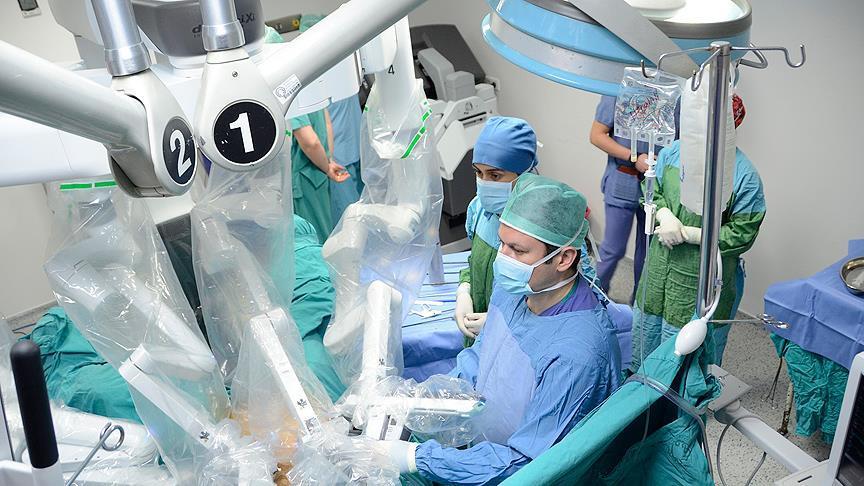The Smart Tissue Autonomous Robot (STAR) is a cutting-edge technology that has transformed the way medical procedures are performed. It is a sophisticated robotic system that can be programmed to perform a wide range of tasks with extreme precision and accuracy. In this article, we will delve deeper into the concept of STAR, its applications, benefits, challenges, and the future of this technology in the medical field.
What exactly is a Smart Tissue Autonomous Robot? The STAR surgical robot is designed to perform complex surgical procedures with high accuracy and precision. It navigates and manipulates soft tissue with greater efficiency and accuracy than traditional surgical methods, thanks to sophisticated algorithms and advanced imaging technology.
How does it function? The STAR system detects, identifies, and tracks the patient’s anatomy in real time using a combination of advanced sensors, imaging technology, and specialised software. This information is then used to guide the robotic instruments to perform the surgical procedure. The system also includes artificial intelligence algorithms that assist it in learning and adapting to the surgeon’s preferences and movements over time, making it more intuitive and responsive.
Key features of STAR
- Advanced imaging technology: STAR generates detailed 3D images of the patient’s anatomy using high-resolution imaging technology, allowing the surgeon to visualise the surgical site in real-time.
- Precise manipulation of soft tissue: STAR is outfitted with robotic instruments capable of manipulating soft tissue with high precision, minimising tissue trauma and lowering the risk of complications.
- Artificial intelligence algorithms: The system has advanced algorithms that enable it to learn and adapt to the surgeon’s movements and preferences, making it more intuitive and responsive.
- Real-time tracking and monitoring: In real time, STAR can track and monitor the patient’s anatomy, allowing the surgeon to make adjustments and fine-tune the procedure as needed.
Smart Tissue Autonomous Robot STAR applications can be used to perform a variety of medical procedures, including:
- Cardiovascular surgery
- Gastrointestinal surgery
- Urologic surgery
- Gynecologic surgery
- Neurosurgery
Advantages of using Smart Tissue Autonomous Robot over traditional methods There are several advantages to using STAR over traditional surgical methods, including:
- Improved accuracy and precision: STAR allows for greater accuracy and precision in surgical procedures than traditional methods, lowering the risk of complications and improving patient outcomes.
- Reduced risk of human error: The system is intended to reduce the possibility of human error, resulting in consistent and predictable surgical outcomes.
- Increased efficiency and speed: STAR can perform surgical procedures faster and more efficiently than traditional methods, reducing overall procedure length and patient recovery time.
- Enhanced patient safety: STAR is capable of performing surgical procedures with high precision, minimising tissue trauma and lowering the risk of complications.
Challenges and Limitations of Smart Tissue Autonomous Robot Despite its many benefits, there are several challenges and limitations to using STAR, including:
- Current limitations of STAR technology: While STAR has advanced significantly in recent years, it still has some limitations, such as the inability to perform certain complex procedures.
- Potential risks associated with using STAR: When using STAR, there is a risk of complications like infection, bleeding, and tissue damage, just like with any surgical procedure.
Future of Smart Tissue Autonomous Robot The future of STAR is very promising, as researchers and engineers are constantly working to improve the system’s capabilities and expand its applications. Some potential advancements in STAR technology include:
- Miniaturization of robotic instruments: Smaller and more versatile robotic instruments could allow for more precise and targeted surgical procedures.
- Improved imaging technology: Advancements in imaging technology could allow for more detailed and accurate imaging of the patient’s anatomy, improving the system’s ability to navigate and manipulate soft tissue.
- Integration with other technologies: STAR could be integrated with other emerging technologies such as virtual reality and augmented reality to improve surgical planning and visualization.
STAR could have a significant effect on the medical sector and patient care. The technology’s improved accuracy, precision, and efficiency may lessen the need for invasive surgical procedures, leading to quicker recovery times and lower medical expenses. Additionally, STAR might make it easier for people in isolated or underserved areas to access specialised surgical care.
In conclusion:
The Smart Tissue Autonomous Robot (STAR) is a game-changing technology that has the potential to change the way medical procedures are performed. STAR is a highly sophisticated system that can improve surgical outcomes and patient safety due to advanced imaging technology, precise soft tissue manipulation, and artificial intelligence algorithms. While there are some limitations and risks to using STAR, the technology’s future looks bright, with potential advancements in miniaturisation, imaging, and integration with other technologies. STAR has had a significant impact on the medical industry and patient care, and we can expect to see more widespread adoption of this technology in the future.










Leave a Reply